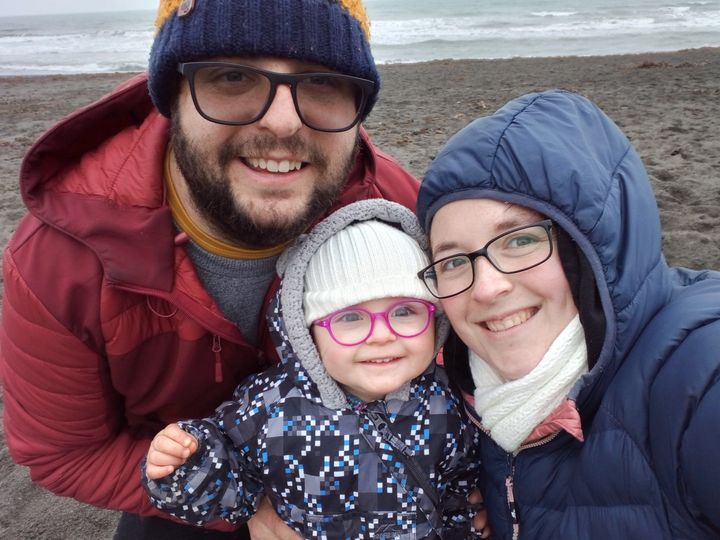
Last Sunday marked World Hearing Day and the focus this year is on tackling societal misperceptions. As hearing parents of a deaf toddler, our family has had to get familiar with a world we knew very little about just two years ago.
With the help of audiologists and charities like Deaf Choices UK, we’ve learnt to navigate this world and provide our daughter with the right support. Along the way we’ve seen just how much we, as a society, misunderstand about deafness.
From picturing silent sitting rooms to thinking that shouting will improve your chances of being heard, here are 7 of the most frustrating misconceptions we’ve encountered around deafness.
1. Deafness is an “older people problem”
When we talk about deafness, many people will automatically conjure up an image of an older (probably elderly) person. But deafness can occur at any stage of life. My daughter, Willow, was just two weeks old when she failed her newborn hearing test.
This isn’t uncommon.
Three babies are born deaf everyday in the UK. Those who are born deaf or lose their hearing at an early age face different challenges to those who lose their hearing in adulthood – like accessing and understanding language for the first time – so it’s important to recognise just how much age shapes the kind of support that deaf people need.
2. Raising your voice helps
Some people instinctively raise their voice when they encounter a deaf person. There are many things that can help a deaf person to understand what you are trying to say, but shouting at them isn’t one.
Plus, the change to your facial expressions and body language when you raise your voice or shout can be frightening for children. It’s best to keep your voice at a normal level, speak naturally, and come down to the child’s level so that they can see your face clearly.
This will help deaf children understand speech in whatever way works best for them, like by lip reading or using hearing aids.
3. Deaf children are quieter
Our house is never quiet. Our daughter is as energetic and playful as any other two year old, and is constantly babbling away. She thrives in the company of other children and, in fact, many of her peers at nursery haven’t noticed she’s deaf. It’s also not uncommon for deaf children to be louder than hearing children, as it can be less easy for them to regulate their volume. Our household is as lively and noisy as any other young family’s.
4. Deafness is hereditary
Many people have no idea that the overwhelming majority of deaf babies (9 in 10) are born to hearing parents. This is true for our family, too. My daughter’s diagnosis came out of the blue and we – like many parents of deaf children – had to quickly learn about the different kinds of support available, and decide on the routes we wanted to go down. We’re proof that anyone can learn to communicate with deaf children with the right resources.
5. Deaf children can’t hear anything
When someone is described as deaf, it’s often taken for granted that they cannot hear anything at all unaided. But the reality is that ‘deaf’ is used as an umbrella term, and there’s a real range to the hearing abilities it refers to, from moderate to profound deafness. Ultimately, deafness is simply a difference in sensory perception, and it’s unhelpful to make assumptions about what a child can and can’t hear.
6. Hearing aids are a magic fix
Hearing aids can make an incredible difference in some situations. But most deaf children will need other communication aids alongside these devices. Still, there’s a perception that hearing aids fix everything, like popping on a pair of prescription lenses and suddenly having 20/20 vision. Hearing aids tend to complement other forms of communication, not replace them, and dispelling the myth that there’s a one-size-fits-all approach can help us to be more inclusive of additional communication aids.
7. All deaf children use British Sign Language
British Sign Language (BSL) is the most common communication method for deaf people, but it’s not the only communication method used. Families with deaf children may also use Sign Supported English (SSE), or lip-reading. And many families, like ours, mix and match.
We use BSL and SSE but we’re also learning Cued Speech through home visits from the charity Deaf Choices UK. Cued Speech is a lipreading support system that makes spoken language visible, by using 8 handshapes in 4 different positions to completely clarify lip patterns.
The combination of BSL and Cued Speech, along with Willow’s hearing aids, is the right approach for our family. Each child’s hearing is unique – and different communication choices will be right for different children.